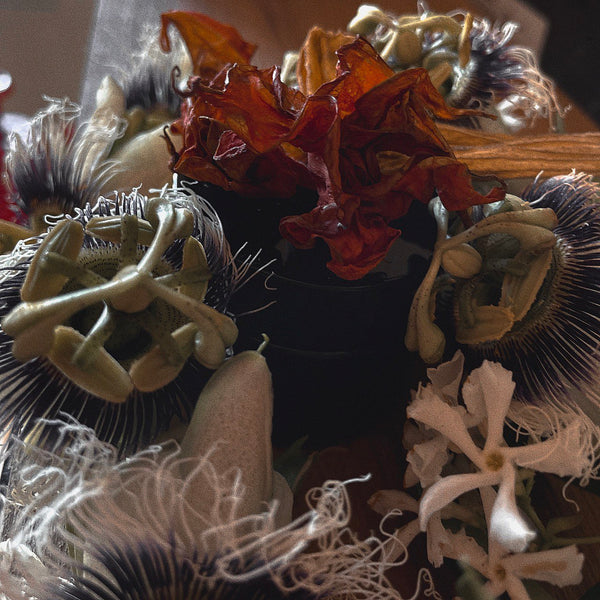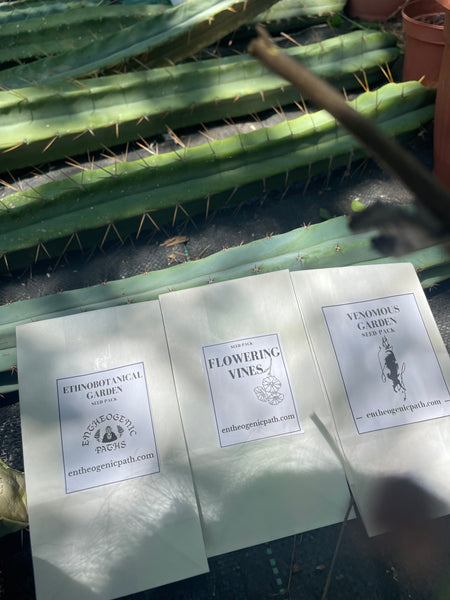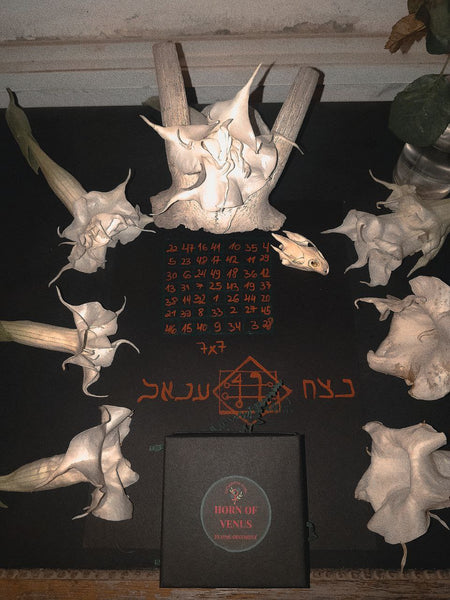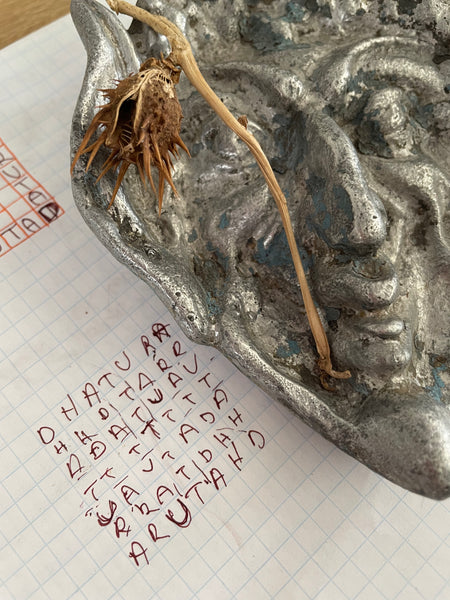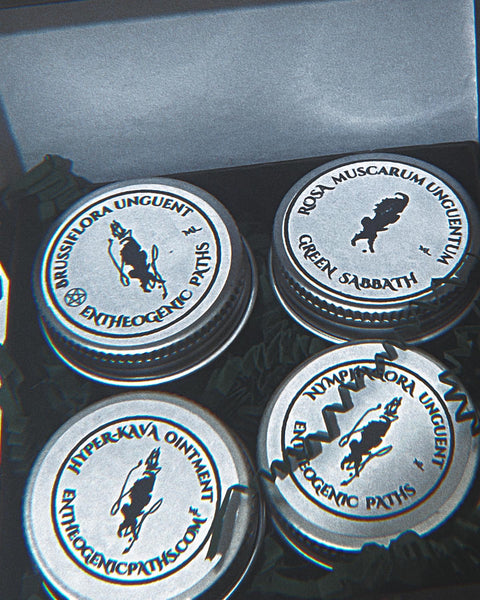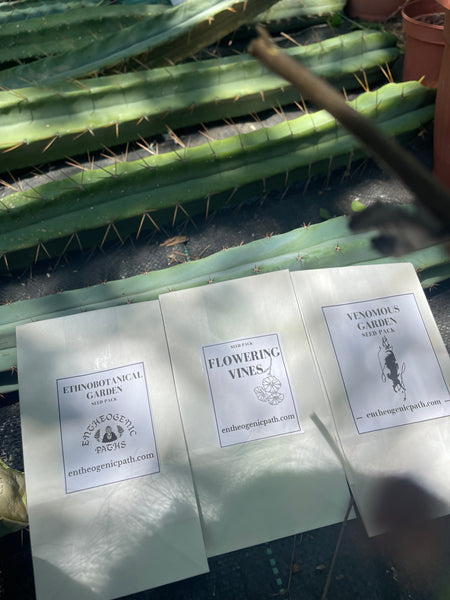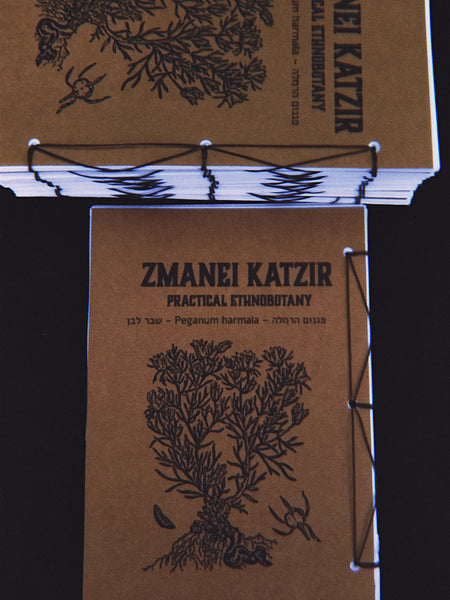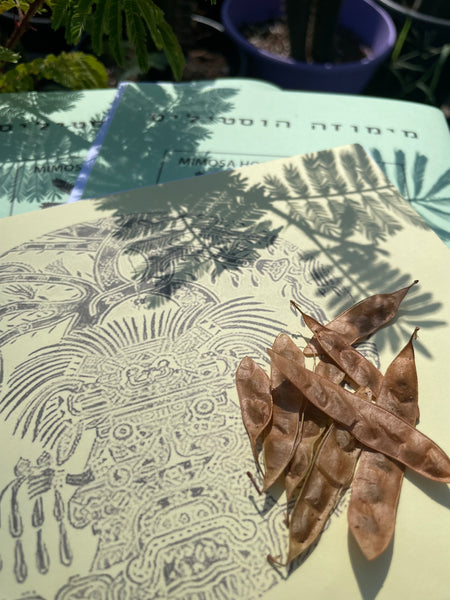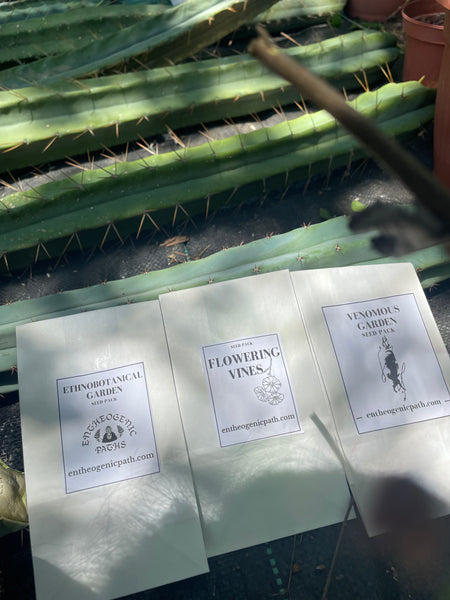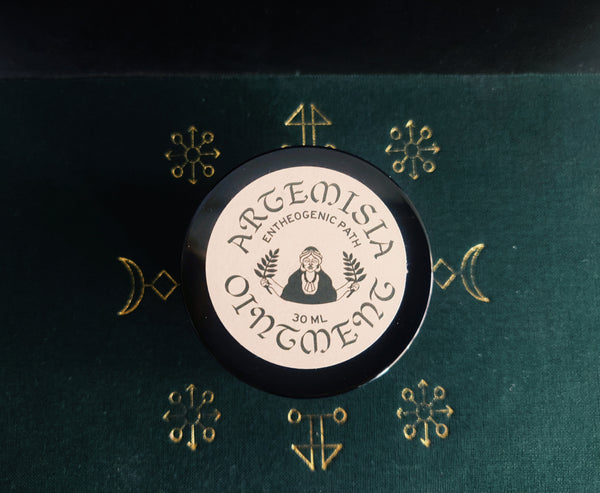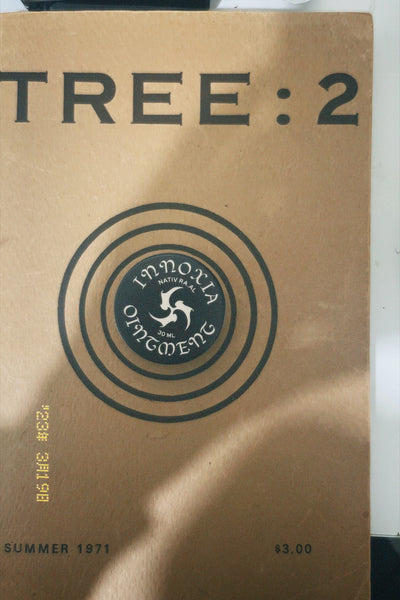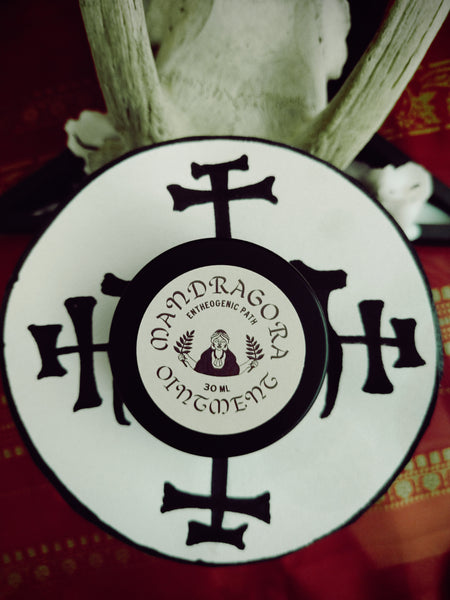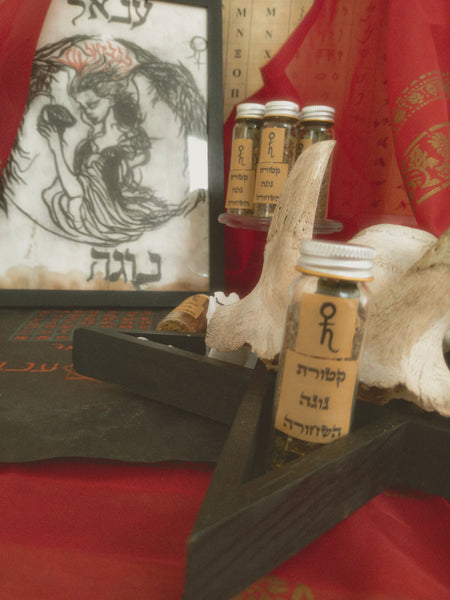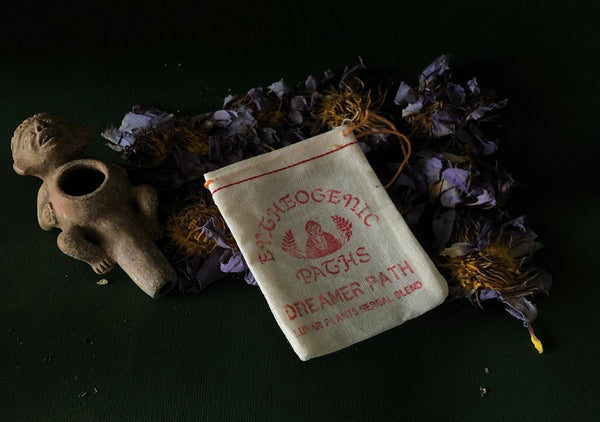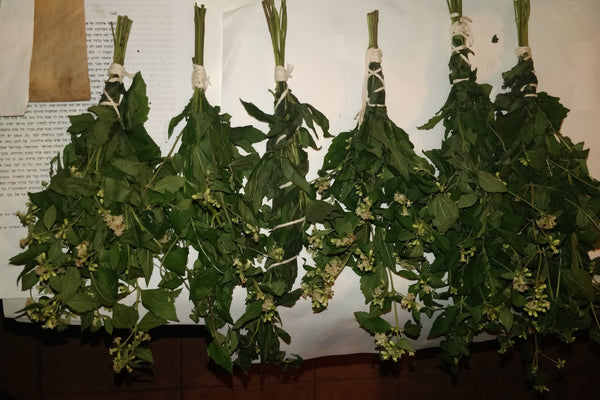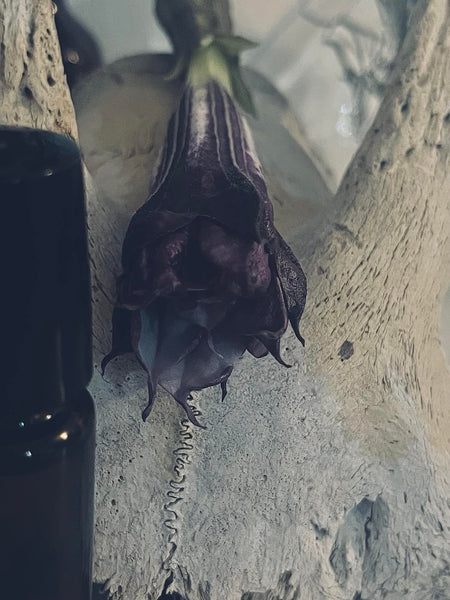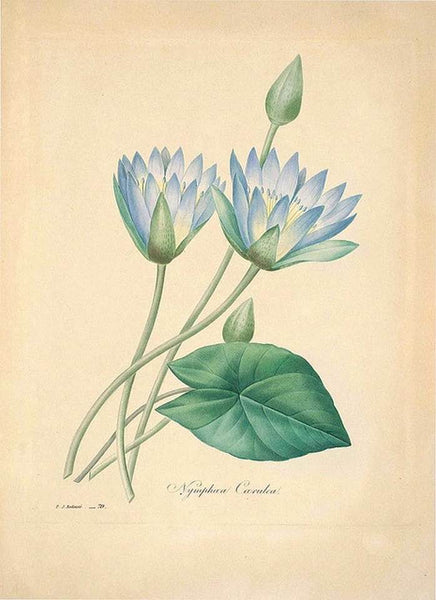
On the Sabbatian origin of the Tu BiShvat seder
Posted by entheogenic paths on
Recently Seder Tu BiShvat has gained great popularity with new clothing that combines modern Israeli materials and ecological themes.
.
In Kabbalah literature until the 18th century, Tu Bishevat does not play a central role and is not mentioned at all in the Sefer Zohar and the writings of the Ari.
The first mention of the study of seder for the Tu BiShvat appears in the words of Rabbi Moshe Hagiz in the book Birkat Eliyahu. According to Hagiz, he instituted the seder based on the custom of his rabbis and grandfather, Rabbi Moshe Galanti.
Hagiz goes on to list 15 fruits that are divided into three types (fruits that are eaten in their skins, fruits that contain seeds, and fruits whose skins are thrown away) corresponding to the three worlds of Beria, Yetzira and Assiya, "and to give abundance to the soul from the world of Atziluth one should bless the smell of the etrog."
The distribution of the different types of fruit against the worlds is based on words that appear in the book 'Chesd Lavraham' by Rabbi Avraham Azulai and quoted in the book 'Tov Ha'aretz' by Rabbi Natan Shapira in the name of Rabbi Chaim Vital.
Only in these compositions it is about 30 fruits and not 15, thirty fruits corresponding to the ten sefirot in each of the worlds... At the end of his words about the Tu BiShvat seder, Hagiz says:
"And I also found in the name of the late Ari, who practiced according to this seder.", there is no evidence of the observance of the Tu BiShvat seder in the Ari writings.
.
The order of studying, praying and eating fruit in honor of the Tu BiShvat, which includes Kabbalistic motifs and a distinctly messianic theme, appears in the book Hemdat Yamim as part of the discussion on the days of the shovavim.
The author of the book Hemdat Yamim testifies that he renewed the Tu Bishvat seder, and points out that this custom is not mentioned in the Ari's writings.
In his book Hemdat Yamim describes the custom, through discussions related to the Tu Bishvat, including the subject of the tradition about the thirty fruits against the sefirot in the three worlds, which he cites, according to the words in Sefer Tov Ha'aretz by Chaim Vital. Also, The author of Hemdat Yamim cites the words of the Ramak in the book Pardes Rimonim about the gematria of the word Ilan in the name of the Ari and his children.
.
The Tu BiShvat seder in Hemdat Yamim consists of reading Bible verses, blessings and prayers, eating fruit, reading articles from the Mishnah and the Zohar book, chanting holy names and drinking four glasses of wine. As mentioned, this seder has been printed many times as part of the book 'P'ri Eitz Hadar', and it is based on the customs of the Tu BiShvat seder that are still used today.
.
The Tu BiShvat seder in the book Hemdat Yamim, which is intended to correct three main sins, extracting semen in vain, eating fruit without a blessing and the sin of the first Adam, carries a distinct messianic meaning that is expressed in the prayer that precedes the order of eating the fruit:
"All the sparks that were scattered by us or by our forefathers and in the sin of the first Adam who sinned in the fruits of the tree will now return to be included in the strength of the tree of life and all evil will be removed from them by the power of your great name which comes from the verse "חיל בלע ויקיאנו" {Job 20:15) and everything will return to our first covenant and not "one may be kept banished" (Samuel 2 14) because you, the Lord, alone gather the rejected ones of Israel. Well, the plant of David, your servant, will grow quickly and his horn will be raised in your righteousness, and the majesty will rise, you will carry a kingdom over the whole world."
.
This prayer is an adaptation of the prayer for the tikkun of "wasted semen" that appears in the writings of the Ari, which was circulated in various versions, including in the book Hemdat Yamim.
The great name that comes out of the verse "Khil Bala Vicianu", which is mentioned in this prayer, is the name of Hbv (חב"ו), one of the 72 names of God, whose virtue according to the Ari's acceptance is to bring out holy sparks from the qlippoth.
The appearance of Tu BiShvat seder for the first time in the 18th century, in the writings of Rabbi Moshe Hagiz and in the book Hemdat Yamim, raises the possibility that the origin of the custom is Sabbatian. Although Rabbi Moshe Hagiz was actually one of those who fought on Sabbatians, he states that he learned this custom from his grandfather, Moshe Galanti, who was one of the Shabbati Zvi believers.
The book Hemdat Yamim includes Shabbati allusions, customs based on the regulations of Natan Hazati and even three poems from his pen, written by Sabbatians (probably members of the class who brought it to print in Izmir) who aspired to a Kabbalistic reform of the Jewish way of life, hoping to bring the second appearance of Shabbati Zvi closer and complete his messianic mission.
And Indeed, we have evidence that Tu Beshevat is celebrated among the Sabbatians. As Benyaho showed, "Tu Bishevat Rosh Hashanah to Ilan" is mentioned in the Shabbat Feast and Joy calendar in the handwriting of the Sabbatian sage R. Avraham Miranda in the book of Yemoth Mashiach.
Tu Bishevat is also celebrated among the Donmah. Avraham Galanti, who was a professor at the University of Istanbul at the beginning of the 20th century, brought a testimony from Ben Donmah according to which on Tu Bishevat they place plates of fruit on top of a round tess made of snakes, and the Sabbatians surround it and pray.
Another piece of evidence is found in a song in Ladino preserved in two collections of the Donmah songs and parallel to the song from the number of the Rakshaz found in the file 'Service and Praise of the Sabbatians' printed by Moshe Atich and Gersham Shalom. Gresham Shalom did not attach any comments to this song.
The song opens with a call to the upcoming discovery of Shabbati Zvi:
God dwells in a great and holy height
Discover our dear beloved Lord
I will like him very much and we love him a lot
From today onwards, we will be crowned
Seder Tu Bishvet Hashabtai [Sabbatian] ends with the hope for the return of Shabti Zvi, who will bring his believers to the tree of life:
The line of Israel is for this joy
To Shatz [Shabtai Tzvi] because here is the light of day
There is an increase, there is no more decrease.
.
.
As is the way of a Hemdat Yamim book, it does not explicitly mention Shabbati Zvi. But as we saw above, the book is aimed at Zvi's return and the hope of his return. Thus, for example, it is possible to understand the hope expressed in the prayer that precedes the seder of eating the fruits, quoted above, that the sparks "will return to be united in the brightness of the tree of life" and that the kingdom of Messiah will rise over the whole world, as a hope for the completion of the redemption by Shabti Zvi, for which the author of the Shabtai song also wishes For Rosh Hashanah to Ilan, the hope that Shabtai will carry us to the tree of life, for an ascension that is not followed by a descent.
Another Sabbatians allusion is found in seder Tu BiShvat in the book Hemdat Yamim in the recommendation to aim for "the pleasant tree of the son of Jesse living on the earth" (combination of the words of the verses in Genesis 2:9 and 1 Samuel 20:31).
The Tree of Life is a central symbol of the Sabbatai Zevi in Shabbati literature, and in the Shabbati poems the name Ilan appears as a nickname for the Deer Sabbaths. And Levinsky already pointed out in the book of the times, that the phrase "the nice tree ben Yishai lives on the earth" comes up in gematria with 'Shabbati Zvi'.
The Rosh Hashanah for Ilan is therefore perceived by the Shebatites as the holiday of Shabbat Zvi - it is the Ilan, the tree of life; And they founded, on the basis of previous related traditions/
This is the time of special ceremonies that included eating fruit, singing and prayers designed to complete the tikkun that Shabbeti Zvi had begun and bring the complete redemption closer.
Under the influence of the book Hemdat Yamim and the book Peri Etz Hadar, which were widely distributed, the holiday of Shabbati Zvi spread in many communities.
The Sabbateans origin of the Tu BiShvat seder did not go unnoticed by some propagators of 10th century customs, but this fact did not detract from its value in their eyes.
Attached is a link to read the full article by Boaz Hoss
"The nice tree ben Yishai lives on the earth - on the Sabbateans origin of the Tu BiShvat seder".



